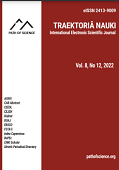Assessment of Air and Water Quality in the Surroundings of School Environment: Its Relation to Mosquito Population and Environmental Health
Assessment of Air and Water Quality in the Surroundings of School Environment: Its Relation to Mosquito Population and Environmental Health
Author(s): Dwi SudiartoSubject(s): Education, Health and medicine and law, Demography and human biology, Environmental interactions
Published by: Altezoro, s. r. o. & Dialog
Keywords: assessment; air quality; water quality; surroundings; school environment; mosquito population; environmental health;
Summary/Abstract: This article explores the importance of evaluating air and water quality in the vicinity of school environments and its relation to mosquito populations and environmental health. The author highlights that poorly maintained school environments can become breeding grounds for mosquitoes, including Aedes aegypti mosquitoes, which are carriers of serious diseases such as dengue fever. The impact can harm the health of students, school staff, and the surrounding community. This study utilises the Systematic Literature Review method to investigate relevant information from reliable sources such as PubMed, Web of Science, Scopus, and Springer Link. The research provides a deeper understanding of the importance of monitoring and evaluating the air and water quality in school environments to prevent more severe health issues. In addition to addressing mosquito-related concerns, this article also highlights the significant role of climate change and human activities in exacerbating air and water quality issues in the vicinity of school environments. With climate change affecting rainfall patterns and human activities such as industry, intensive agriculture, and transportation contributing to pollution, attention to the conditions of school environments becomes increasingly crucial. The article emphasises the need for proactive actions and comprehensive policies involving various stakeholders, such as schools, government entities, environmental organisations, and the community, to address these issues. Furthermore, increased awareness and education regarding maintaining a healthy environment are crucial to implementing effective preventive measures and protection. We can create safe, healthy, and optimal school environments for students' development and the community's well-being through collaboration and strong commitment from all parties involved.
Journal: Traektoriâ Nauki
- Issue Year: 9/2023
- Issue No: 6
- Page Range: 3008-3016
- Page Count: 9
- Language: English

